Every year the department honors one or several of its alumni. We celebrate their accomplishments while providing our current students with exemplary role models.
Distinguished Alumni Awards for 2020-2021:
Christine Siddoway, Ed Saade
Christine Siddoway
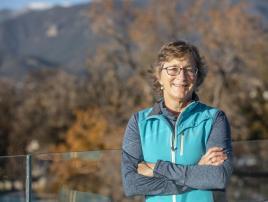 Christine Smith Siddoway ’95 entered the PhD program at UCSB with a single objective in mind: to conduct field work in West Antarctica, as the basis for the graduate degree. While at University of Arizona for an MSc, Siddoway had worked under UA Prof. Peter Coney on tectonostratigraphic analysis, and the tectonic development of Antarctica caught hold. At the outset in 1987, it wasn’t clear that Antarctica was within reach– that is, until Professor Bruce Luyendyk revealed he had similar research plans. Even the hoped-for destination was a match: the Fosdick Mountains, bordering the Ross Sea. The initial three seasons of ground-based work laid a basis for airborne geophysical surveys, in a joint effort by Luyendyk and Siddoway that investigated a “range and glacier” region that held clues to the subsided crust of the Ross Sea. Their starting point, the Fosdick range, is now recognized as Antarctica’s only substantiated metamorphic core complex. The exposure of mid-crust formed during broad extension across West Antarctica and Zealandia, within the Gondwana supercontinent. Subsequent projects investigated mid-crustal processes and production of granite, that led to growth and stabilization of Pacific West Antarctica. During Siddoway’s PhD, the academic support from UCSB Profs Sibson, Mattinson, Gans, and Busby and post-docs Dave Kimbrough and Steve Richard were essential.
Christine Smith Siddoway ’95 entered the PhD program at UCSB with a single objective in mind: to conduct field work in West Antarctica, as the basis for the graduate degree. While at University of Arizona for an MSc, Siddoway had worked under UA Prof. Peter Coney on tectonostratigraphic analysis, and the tectonic development of Antarctica caught hold. At the outset in 1987, it wasn’t clear that Antarctica was within reach– that is, until Professor Bruce Luyendyk revealed he had similar research plans. Even the hoped-for destination was a match: the Fosdick Mountains, bordering the Ross Sea. The initial three seasons of ground-based work laid a basis for airborne geophysical surveys, in a joint effort by Luyendyk and Siddoway that investigated a “range and glacier” region that held clues to the subsided crust of the Ross Sea. Their starting point, the Fosdick range, is now recognized as Antarctica’s only substantiated metamorphic core complex. The exposure of mid-crust formed during broad extension across West Antarctica and Zealandia, within the Gondwana supercontinent. Subsequent projects investigated mid-crustal processes and production of granite, that led to growth and stabilization of Pacific West Antarctica. During Siddoway’s PhD, the academic support from UCSB Profs Sibson, Mattinson, Gans, and Busby and post-docs Dave Kimbrough and Steve Richard were essential.
Each discovery threaded in to new questions, naturally—so that by now in 2021, Siddoway has received ten NSF awards for Antarctic research and traveled to the Ice fourteen times. Most of her work was conducted out of small, self-supported camps of 7 persons or less, using ‘old-school’ travel by skidoo and sleds, or traversing on foot. One big multi-institution project, ROSETTA-Ice 2016-19, involved no on-Ice work for Siddoway, but brought an enormous advance in geophysical mapping of Ross Ice Shelf and more material for ongoing work. On occasion, Siddoway joined international expeditions; the most recent of these being the International Ocean Discovery Program’s Expedition 379 to the Amundsen Sea, in 2019. During her PhD years, many in the graduate cohort at UCSB sailed on Pacific Ocean cruises with faculty Ken Macdonald, Rachel Hayman, and Bruce Luyendyk – planting the idea for ocean research. And IODP379 provided plenty for a ‘land geologist’ to do: Icebergs have transported an enormous quantity of ‘coarse detritus’ to the deep ocean surrounding Antarctica. Some clasts match bedrock sources as far inland as the Ellsworth Mountains… which suggests that Antarctica has an open interior seaway, at times! BBC science covered this finding, last year (https://www.bbc.com/news/science-environment-56904548 ).
It’s thanks to her academic position at Colorado College that Christine has been able to travel to Antarctica so much, without creating a course-scheduling nightmare for her department colleagues. CC is an undergraduate liberal arts institution with a non-standard academic calendar. Courses are taught in a “Block” format, for immersive learning on one subject at a time. Thanks to the ‘block’ schedule, Siddoway could arrange Antarctica work during the Southern summer, for 2 to 3 months, and still fulfill the annual teaching obligation at home! Over the years, seven undergraduates also joined Antarctic trips, as a basis for undergraduate research. She often reflects how much the ‘block’ class rhythm resembles the rhythm of graduate school: wholly concentrating on one analytical, field or writing endeavor at one time. In recent years, Christine has brought Colorado students to southern California for field courses – visiting classic sites known from prior years, and new ones recommended by Prof Francis Macdonald.
Located near Pikes Peak / Tavakaiv Mountain (Tavakaiv is the name used by indigenous Ute peoples), Colorado College is well-placed for Rocky Mountains research, where Siddoway has investigated Proterozoic orogens and continental growth of Laurentia, the development of the Bighorn Mountains arch in Wyoming, and brittle kinematics of southern Front Range faults. She also resolved the age of granite-hosted sedimentary injectites in Colorado – features that had defied understanding for more than a century. They turned out to be Cryogenian in age (~676 million years old) and to provide a Neoproterozoic record that lends to debate about the time of formation of the Great Unconformity. Afficionados of Snowball Earth times have started coming to get a look at these unusual features – including Frances Macdonald, see this UCSB Current feature for more: https://www.news.ucsb.edu/2020/019892/great-unconformity . Christine will welcome any UCSB visitors who venture inland from the coast, and thanks all for the recognition from the alumni award!
Ed Saade
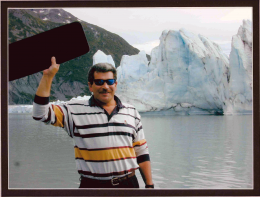
Edward (Ed) Saade didn’t come to UCSB with a passion for geology, but he certainly left with one. Having grown up on the coast of California, Ed knew going into college that he wanted to make a life on the ocean. At the time, UCSB didn’t offer an undergraduate degree in oceanography, so Ed identified two potential paths for pursuing ocean studies: biology and geology. He picked the latter, and has made a successful and meaningful career of it for more than 45 years.
Ed’s offshore work began even before he graduated in 1977, running high-resolution seismic gear for an ocean research firm during the summer in the Bering Sea and Gulf of Alaska. He recalls being amazed that he could have so much fun while still getting paid ($45 per day!). Degree in hand, Ed spent nearly 20 years on research vessels mapping the seafloor and analyzing sub-surface sediments in the US and abroad. This work was primarily focused on identifying geohazards to support offshore infrastructure projects, but also included search and recovery efforts, including those following the Challenger Space Shuttle disaster in 1986 and the TWA flight 800 crash a decade later.
In the mid-1990s, Ed transitioned out of fieldwork and into management. During this period, he ultimately landed with leading Geo-data specialist company Fugro, overseeing offices in San Diego, Washington DC and Houston. Today, he serves as President of Fugro’s USA and Group Director of the Americas region encompassing both continents, with duties that cover geophysical, geotechnical, and geospatial services at sea and on land.
Under his leadership, Fugro has ushered in multiple technology innovations that are improving the quality, coverage, and accessibility of geodata to clients in the Americas and around the world. He has also championed innovative partnerships, advocating for cross-sectoral collaboration to address climate change and sea level rise for resilient coastlines and a sustainable ocean economy. Fugro’s direct support for the UN Ocean Decade and Seabed 2030 initiatives are two recent examples.
Distinguished Alumni Awards for 2018-2019:
Susan Hubbard, Joseph Acaba
Susan Hubbard
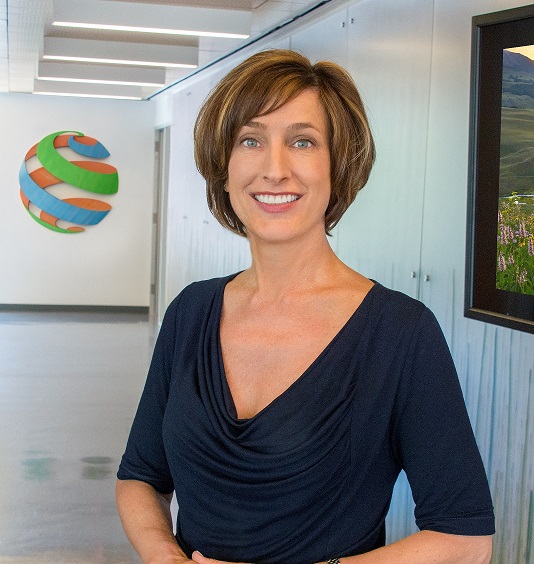 Susan Hubbard, formerly Susan Sharpless, received her BS in Geological Sciences from UCSB in 1985. She subsequently received an MS in geophysics from Virginia Tech and a PhD in Civil and Environmental Engineering from UC Berkeley. Susan is currently the Associate Lab Director at Lawrence Berkeley National Laboratory, where she leads all Earth and Environmental Sciences research. Prior joining Berkeley Lab, she was a geologist at the US Geological Survey and a geophysicist in industry.
Susan Hubbard, formerly Susan Sharpless, received her BS in Geological Sciences from UCSB in 1985. She subsequently received an MS in geophysics from Virginia Tech and a PhD in Civil and Environmental Engineering from UC Berkeley. Susan is currently the Associate Lab Director at Lawrence Berkeley National Laboratory, where she leads all Earth and Environmental Sciences research. Prior joining Berkeley Lab, she was a geologist at the US Geological Survey and a geophysicist in industry.
Susan’s research focuses on quantifying the organization and function of terrestrial systems with a particular emphasis on using geophysical methods to explore how hydrological, geochemical and biological processes interact to govern larger scale system behavior. She has developed and used new geophysical approaches to understand processes critical for water resources, carbon cycling, contaminant transport and sustainable agriculture challenges. She currently leads a multi-disciplinary project focused on developing a predictive understanding of how mountainous watersheds respond to early snowmelt, and the associated ramifications for downgradient water availability and water quality. She is also involved in investigating the influence of thawing Arctic permafrost on carbon-climate feedbacks and quantifying vineyard soil-plant interactions under environmental stress.
According to Susan, the educational foundation and mentorship that she received at UCSB provided a critical springboard for her career. She learned to appreciate geological heterogeneity through field method classes and Departmental field trips. The geophysics class that she took in her senior year revealed to her how geophysical data can provide a ‘window’ into the complex subsurface. She sought advice from Prof. Ralph Archuleta about geophysical career paths, which led to her position as a geologist at the USGS. This was a critical step in Susan’s research trajectory, which has since focused on developing methods to integrate spatially extensive yet indirect information from geophysics with sparse but direct measurements to interpret heterogeneous earth systems.
Susan is an elected member of the American Academy of Arts and Sciences, a Fellow of AGU and GSA, and a recipient of several SEG awards. In addition to science, she enjoys winemaking, traveling, and raising chickens.
Joseph Acaba
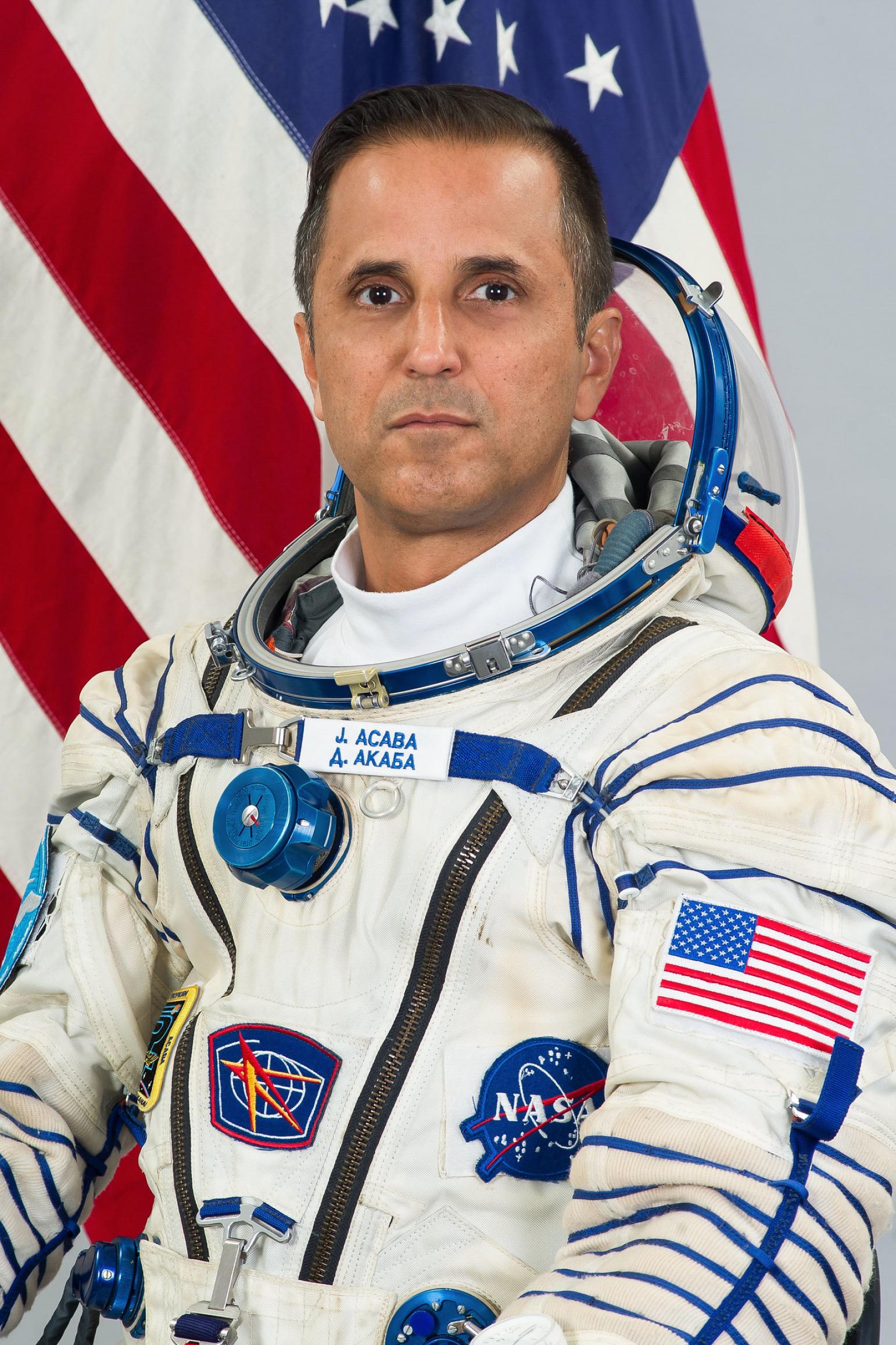 While attending UCSB, Joe Acaba became a member of the United States Marine Corps, Reserves. Upon graduating in 1990, with the encouragement of Dr. Art Sylvester, Joe attended the University of Arizona where he earned an MS in Geology. He worked as a hydro-geologist in Los Angeles, California, primarily on Superfund sites, and was involved in the assessment and remediation of groundwater contaminants. Following up on an interest he formed while at UCSB, Joe joined the United States Peace Corps as an Environmental Education Awareness Promoter in the Dominican Republic. He then managed the Caribbean Marine Research Center at Lee Stocking Island in the Exumas, Bahamas and taught one year of high school science and 4 years of middle school math and science.
While attending UCSB, Joe Acaba became a member of the United States Marine Corps, Reserves. Upon graduating in 1990, with the encouragement of Dr. Art Sylvester, Joe attended the University of Arizona where he earned an MS in Geology. He worked as a hydro-geologist in Los Angeles, California, primarily on Superfund sites, and was involved in the assessment and remediation of groundwater contaminants. Following up on an interest he formed while at UCSB, Joe joined the United States Peace Corps as an Environmental Education Awareness Promoter in the Dominican Republic. He then managed the Caribbean Marine Research Center at Lee Stocking Island in the Exumas, Bahamas and taught one year of high school science and 4 years of middle school math and science.
In 2004, Joe was selected as an Astronaut Candidate by NASA. In February 2006, he completed astronaut candidate training that included scientific and technical briefings, intensive instruction in shuttle and International Space Station systems, physiological training, T-38 flight training and water and wilderness survival training. Joe’s first mission to the International Space Station was in 2009 aboard Space Shuttle Discovery. The primary objective was to deliver the last set of solar arrays to the ISS. In addition, Joe has flown two long duration missions to the ISS, launching on Russian Soyuz space crafts. In total, Joe has conducted three spacewalks and has accumulated 308 days in space.
Joe recently served as Director of Operations Russia in Star City supporting crew training in Soyuz and Russian Segment systems. He is currently working in the Astronaut Office in Houston as a representative for Commercial Crew Vehicle program. This program will return crew launch capability to U.S. soil for the first time since 2011. Crews currently launch and land on Soyuz spacecraft in Kazakhstan.
Distinguished Alumni Awards for 2017-2018:
Ben Benumof, Barbara John
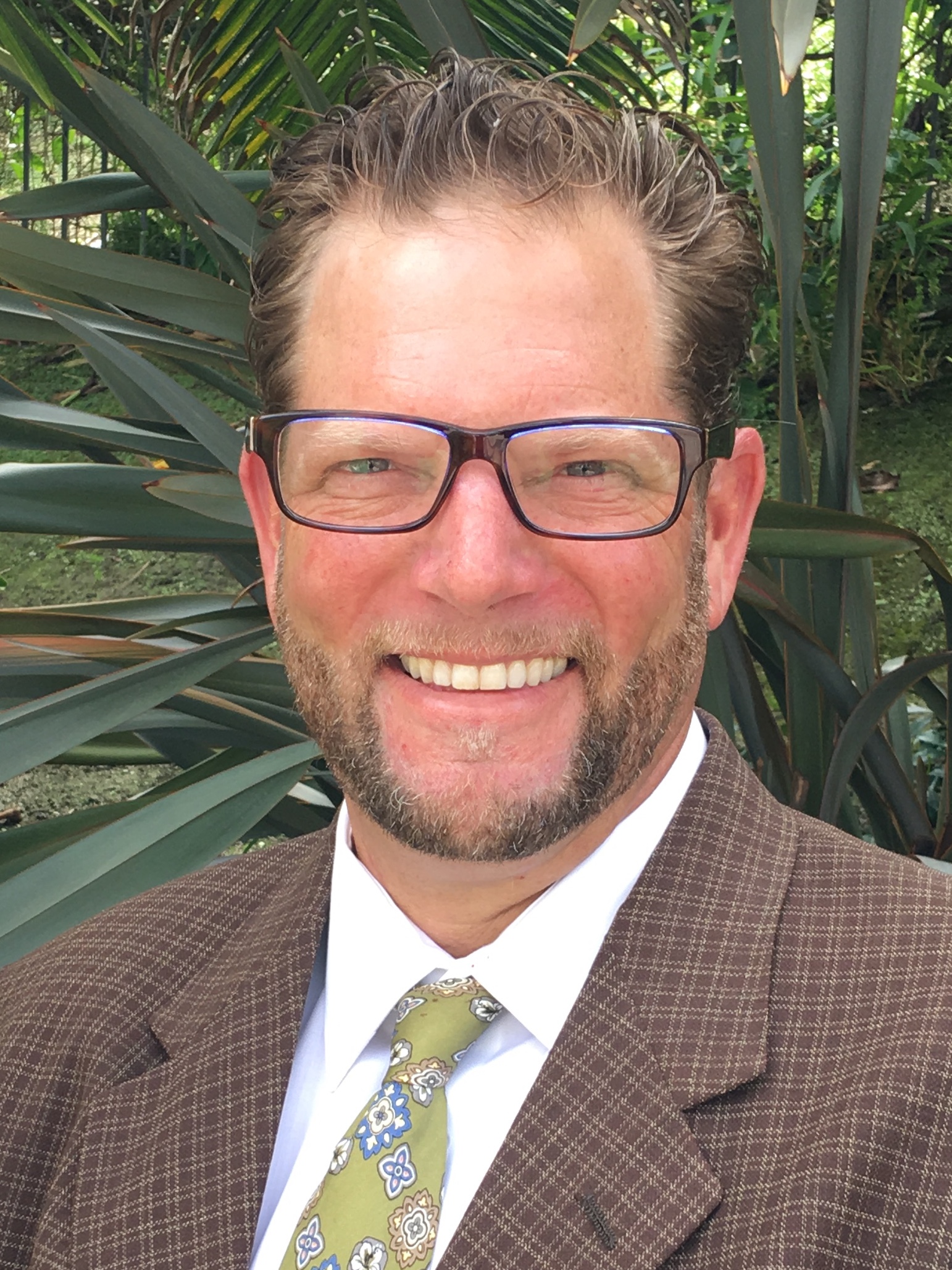 Ben Benumof
Ben Benumof
Since graduating from UCSB in 1994 with degrees in Geological Sciences (B.S.) and Geography (B.A.), my professional adventures have taken me in many interesting directions, with my education and personal development at UCSB at the core of all of my success.
Beginning immediately after graduation, I worked as a staff geologist at the Hawaiian Volcano Observatory (HVO) on the Big Island of Hawaii, where I honed my field skills for the better part of a year mapping Mauna Loa and Kilauea lava flows with the great Jack Lockwood, Ph.D., who has been a dear mentor and friend of mine ever since. It was while working for HVO that I knew I wanted to focus on applied geology (i.e., how geology relates to people and land use), and as a life-long surfer, working in the coastal environment was a no brainer for me.
At UCSC (1995-1999), I was fortunate to be funded by FEMA as a graduate researcher and, during the winter of 1997-1998, I was equally fortunate to witness and investigate first-hand one of the largest El Nino seasons to ever impact the California coast, performing my field work under extreme conditions, optimal for studying coastal erosion. When I arrived at UCSC to embark on my Ph.D., my background as a field geologist trained at UCSB by Art Sylvester, Jim Boles, and Cathy Busby, among many other great professors, preceded me with “bells and whistles.”
Upon graduation, I spent a few years as a consulting engineering geologist, first with Cotton Shires in Los Gatos, CA, and later as an independent, when I was given the opportunity to join Jack Lockwood and a group of highly touted USGS geophysicists on a mission to Isla Del Coco off the coast of Costa Rica and Panama to investigate the whereabouts of missing ancient artifacts. It was an unbelievable project to say the least…scuba diving, jumping out of helicopters, mapping landslides and lava flows, looking for buried treasure…every kid’s dream.
Ultimately, the focus of my work as a consultant became more and more specialized in the land use, construction and real estate industries, with a focus towards litigation support and expert witness type work, and it occurred to me that combining my geologic interests with law would be a superb professional combination for me.
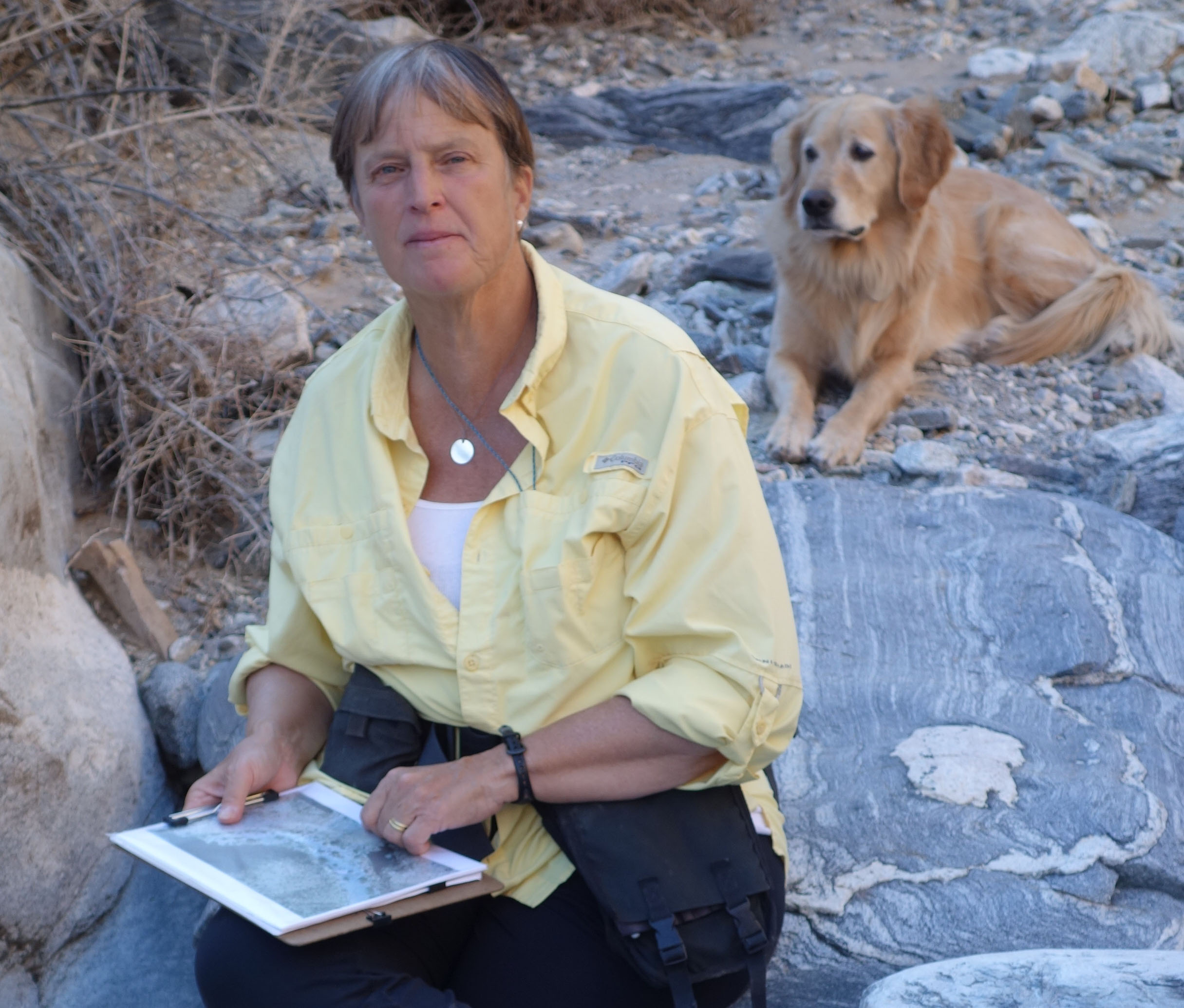 Barbara John
Barbara John
Barbara (Bobbie) John obtained her AB at U.C. Berkeley, and worked for 3 years at the USGS mapping in the Sierra Nevada and Mojave-Sonoran deserts, before attending UCSB. The choice of graduate programs was heavily influenced by a number of Survey geologists/UCSB alums (including Gordon Haxel, Dan May, Dave Sherrod, Tom Sisson, and Dick Tosdal), with their enthusiasm for the faculty and allied field-based research at UCSB contagious. Course work and field trips with Cliff Hobson, John Crowell, and Rick Sibson were fundamental to her growth as an earth scientist, but also the incredible influence of her graduate cohort, in particular the loosely organized ‘Moosehead Lodge’.
John’s academic career began days after submitting her PhD, when she moved to England to take up a lectureship at the University of Cambridge. There she adapted to a completely new (old) education system, began research in the Pyrenees, Alps and West Africa, and met her husband and geophysicist, Mike Cheadle. In 1993, she returned to the US and a position at the University of Wyoming where she has remained. Her research interests are diverse, but include processes of lithospheric deformation (both on the continents and in the oceans), and have focused on extension, using field studies as natural examples of the processes. Seizing background and techniques from each of her mentors (Hobson, Mattinson, Sibson and Tilton), she combines petrologic, geochemical, microstructural and geophysical studies, to constrain the nature of extension processes (magmatic and structural), to assess rates of tectonic processes, and the space-time distribution of deformation and/or magmatism. Her most recent work has led to advancing our understanding of crustal growth and plate spreading processes at ultra-slow to superfast spreading mid-ocean ridges.
John has taught a spectrum of courses in the UK and US including mineralogy and petrology, structural geology, tectonics (Alpine to mid-ocean ridges), mineral resources, and summer field geology courses (in Scotland, the Alps and western North America). When not an academic, she enjoys exploring western North America on foot, and by kayak, as well as open water swimming, passions she developed at UCSB
Distinguished Alumni Awards for 2016-2017:
Gerald Bawden, Alan Krusi
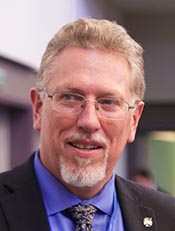 Gerald Bawden
Gerald Bawden
Gerald began his academic career at Arizona State University before he transferred to UCSB where he earned a Bachelor of Science in 1991. Art Sylvester asked Gerald to join his undergraduate surveying crew and for the next three summers he and a number of his classmates collected detailed geodetic surveying data across active tectonic and volcanic structures throughout California. Leading Art’s surveying crew provided Gerald with a fundamental understanding of tectonic geodesy that he ultimately shaped into a career.
He received a M.S. and Ph.D. from UC Davis using the emerging technique of GPS to measure and model the post seismic deformation field associated with the 1952 Kern County Earthquake. In the process, he developed new tools to characterize the onset of fault development and recognized a newly forming strike slip fault near the Lake Isabella Dam.
Gerald was awarded a NASA postdoc position at the USGS in Menlo Park where he applied the new space geodesy technique of InSAR to understand how groundwater pumping masked tectonic motion across Los Angeles. He permanently joined the USGS and was among the first scientists to begin using ground-based LiDAR as a research tool.
Gerald is now on an extended detail (loan) from the USGS to NASA Headquarters in Washington D.C. as the Program Manager responsible for the Natural Hazards research portfolio. He also supports both the NISAR and SWOT satellite missions, UAVSAR airborne radar platform, and NASA’s Space Geodesy Program. Gerald credits UCSB and Art Sylvester for spring boarding his academic research career.
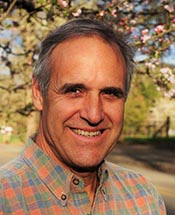 Alan Krusi
Alan Krusi
I discovered geology by accident. In 1975, I transferred to UCSB from the US Naval Academy as a junior, without a major or area of interest. I drifted into the geology department, largely out of curiosity and with few expectations, enrolled in a couple of geology courses that fall. One was “Intro to Field Studies”, taught then by Art Sylvester. As many others also have experienced, it was the beginning of an exciting learning journey in critical reasoning, self-discipline, writing precision and high achievement which didn’t end for me at graduation.
Upon graduation, I was hired as a staff geologist by Dames & Moore, a large consulting engineering firm, and I began my nearly 40-year career in the worlds of applied sciences and engineering. Unfortunately, my days in the field were limited to six years as I successively took on more management duties. For the next several decades, I managed various engineering and applied sciences businesses. In 2003, I became CEO of Earth Tech, an applied sciences company with 7,500 employees in 13 countries. Earth Tech was acquired by AECOM in 2007, and I stayed with the company until my retirement in 2015.
My career embodied many responsibilities, both technical and financial, but began in the geo department at UCSB where I developed the key learning and thinking skills which served me well over my career -- core learnings about my own strengths and limitations, the scientific methods of inquiry and critical analysis, and the uncompromising standards of execution excellence. These were nurtured at UCSB under the guidance of the staff and faculty of the Geological Sciences Department, for which I am very grateful.
Distinguished Alumni Awards for 2015-2016:
Ruth Harris, Melissa Morse
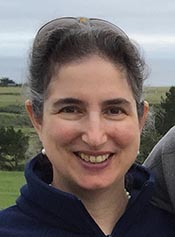 Ruth Harris
Ruth Harris
Ruth obtained her BS and MS degrees from MIT and Cornell University, respectively, then worked for a few years before applying to UCSB’s Department of Geological Sciences PhD program. UCSB had been highly recommended to her by a former classmate and coworkers.
Ruth reports that the Department made a huge difference in her professional path forward. At UCSB she learned important skills from her supportive geology housemates and her officemates, and from many other friendly and kind classmates too. She appreciates that her advisor, Ralph Archuleta provided her with generous funding and research topic tips. Ralph also gave her advice about how to succeed as a postdoc and transition to a real job, and he has continued to be a supportive mentor through the 20+ years since graduation.
During the course of her UCSB graduate studies, Ruth learned many unexpected things from her professors. “For example,” she writes, “during my Comprehensive Exam it was discovered that I had not had any paleontology classes, so I was signed up to take Bruce Tiffney’s course, The History of Life. Talk about a fantastic opportunity! I also learned that the sisters of professors will help out their siblings when a field trip experiences bad weather. This occurred during John Crowell’s San Andreas fault field trip that journeyed from the Mecca Hills to Parkfield. We encountered an unexpected snow storm, and the next thing we knew, our entire class was gratefully bedded down in our sleeping bags inside John’s sister’s home in Victorville.” Following UCSB, Ruth was an NRC postdoc at the USGS, then after two years of scrambling, writing NSF proposals, etc., for an uncertain future, she was fortunate to be hired into a permanent research position. She says that she enjoys working at the USGS, and that important aspects of her job include the breadth of expertise and kindness of her colleagues, the exciting research topics, and the availability of flexible work hours (she and her husband, whom she married while she was a student at UCSB, have two children who are now collegeage). Ruth emphasizes that without the encouragement of her parents, and her UCSB Geological Sciences (Earth Science) education, she would not be where she is today. She has fond memories of her time in the Department, and is happy to see that the same enthusiasm and energy that she remembers from decades ago is still there today.
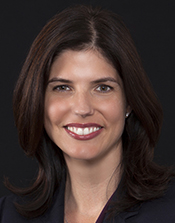 Melissa Morse
Melissa Morse
I came to UCSB in the fall of 1992 with little notion of what I wanted to study. One of my first college courses was Bill Prothero’s Oceanography course. It was fascinating! Mid-way through the quarter, I went on a departmental field trip to the Eastern Mojave, led by Art Sylvester, Tanya Atwater, and Bob Norris. After that trip, I was completely hooked!
After finishing my bachelor’s in 1996, I stayed on to do my master’s with Jim Boles, working on cores from the fluvial deltaic Oficina Formation in Venezuela. We collaborated with geologists from Benton Oil and Gas Company in Carpinteria. This was my introduction to the oil business. From there I interned with Exxon and joined them full-time after finishing my master’s in 1999. Living in New Orleans and working offshore in the Gulf of Mexico, I discovered the addictive thrill of drilling for oil. Witnessing the merger of Exxon and Mobil firsthand sparked a second professional passion for me, business. A few years later, while working for Occidental in Long Beach, I earned my MBA from Pepperdine University.
Today, I am fortunate to manage a team of incredibly talented geologists, engineers, and support staff that is focused on developing California’s vast heavy oil potential. I am married to an amazing (and amazingly patient) geologist, Nathan Reish, and we have two beautiful and funny sons.
Distinguished Alumni Awards for 2014-2015:
Krishna Sinha, Mary Stallard
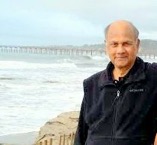 Krishna Sinha
Krishna Sinha
Before arriving at UCSB in 1965, Krishna Sinha received his BS and MS degrees at Patna University in India. While in England exploring opportunities for advanced studies, and after opting against a career in mining geology, he received a handwritten letter from Professor Aaron Waters inviting him to consider attending UCSB. Krishna accepted that offer, and through the exceptional mentoring of Aaron, George Tilton, Cliff Hopson, Dick Fisher,Bill Wise, and Robert Garrison, he received his PhD in 1969. This was followed by a twoyear post-doctoral fellowship at the Department of Terrestrial Magnetism (Carnegie Institute of Washington), where he worked developing new mass spectrometry techniques. While there, Krishna developed joint research programs with the U.S. Geological Survey, enabling him to start coupling isotopic systems to regional geologic histories. In 1971 he was hired by Virginia Tech to set up a mass spectrometer and geochemistry facility. He spent 37 years there mentoring students in melding geochemical and field data to unravel the geological history of much of coastal North America. An invitation to serve on the Tectonics Review panel at NSF provided him the opportunity to promote and support the increasing role of tectonics in geosciences through ondemand access to data and models. Through his efforts, and the support of hundreds of his colleagues, the Geoinformatics Division within the Geological Society of America was established. The Division, of which Krishna was the founding Chair, continues to thrive, providing significant benefits to the community at large.
Krishna and Barbara met while attending UCSB. They were married in 1970, under a pepper tree at Barbara’s parents’ home in Samarkand. They agreed to return to Santa Barbara after retirement, moving here in 2013. Together with their dog Max, they enjoy the climate and beauty of this area. With Krishna’s appointment as an Adjunct Professor, it seems their travels are complete. Krishna works uninterruptedly on research papers about geologic topics that have always intrigued him.
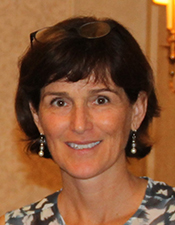 Mary Stallar
Mary Stallar
After completing her master’s in 1986 under the incomparable Dr. Jim Boles, Mary Stallard spent two years with the USGS assessing geothermal resources in Honduras, Mexico, and Lassen National Park. Thereafter she moved to the environmental industry, spending 17 years at Weiss Associates where she managed its Environmental Investigations Group. After the birth of her daughter in 1998, Mary struggled to balance a demanding job with the time she wanted to spend time with her little girl. Ultimately she decided the best way to accomplish this would be to start her own firm, Montclair Environmental Management, Inc. (“MEMI”), with her husband, Rob Marinai. Rob, also a 1986 Boles master’s student, worked in the oil and environmental industries before earning an MBA. He runs the financial side of the business and also directs habitat restoration projects that generate credits for parties needing to settle environmental liabilities. In its 10 year existence, MEMI has turned into exactly what Mary had envisioned, a small consulting practice that tackles a wide range of complex environmental problems involving hydrogeology and geochemistry (on a flexible schedule). MEMI is often brought in to provide specific expertise on large projects with other consulting firms, collaborations that Mary especially enjoys. A particularly interesting ongoing project involves hexavalent chromium in groundwater in the Davis, California area. Understanding what’s going on there remains elusive, so she is happy to brainstorm with anyone interested! When not working, Mary loves to be outdoors: backpacking, hiking, cycling, volunteering in Oakland parks and gardens and shoreline cleanups, or just sitting in the sun doing a crossword puzzle. She and Rob are gratified that their 16-year old daughter, Amelia, also loves the outdoors and backpacking, is active in environmental causes, and may even pursue an “Earth” related career.
Distinguished Alumni Awards for 2013-2014:
Steven Comstock, Kaj Hoernle, James Mattinson, Roy Patterson
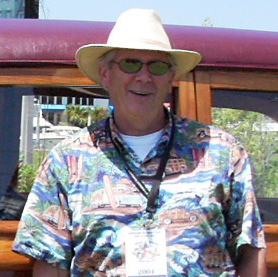 Steven Comstock
Steven Comstock
Steve Comstock came to UCSB in the Fall of 1965 on a football scholarship, as an undeclared Major. He very quickly fell into Professor Robert Webb’s “web” of mystery & discovery in the earth sciences. Sports, fraternities & geologic field trips consumed his freshman year… to the point he skipped too many classes… and lost his student military draft deferment. Steve entered the US Army in the fall of 1967 and served three years on active duty, rising to the rank of Captain. During his overseas tour in SE Asia, he marveled at how his college courses allowed him to understand the local geology & geomorphology… & how those things impacted every aspect of life in these areas.
On his return, Steve re-started his education at American River College, earning an AA in Math & Physics. Meantime, he married his high school sweetheart, and they began their family, moving back to UCSB in late 1970 to complete a BA in Geology in 1972 and then an MS in 1974 on the stratigraphic record of the Paleocene and the tectonic expression of the Big Pine Fault in the San Rafael Wilderness. Under the masterful guidance of Norris, Hopson, Tilton, Clark, Wise, Sylvester, Crowell & Weaver, Steve backpacked into an area hadn’t been mapped on the ground since 1923. There he quantified right-lateral displacement along the Big Pine Fault and defined some unique paleoenvironmental elements of the Paleocene.
After graduating, Steve joined Mobil Oil in Denver, where his early work as an exploration geologist included study of Paleozoic reefs and meandering sands and led to some of Mobil’s first computer-generated maps. Following an Outer Continental Shelf federal lease sale, Steve analyzed cores over the prospective areas and tied the geophysical data to the local stratigraphy he had studied at UCSB.
Upon transfer to Mobil’s Alaskan Exploration group in Dallas, Steve led summer field expeditions to Alaska from 1976-1979. It was especially in this role that the strong field program at UCSB helped Steve in his early career. From 1970-1980, Steve stayed active in the US Army Reserve. He twice received the Army Commendation Medal for his work on the oil & gas industries of Communist countries, while leading a group of senior analysts in a Military Intelligence group working with the Defense Intelligence Agency.
In 1979 Steve became Mobil’s Geologic Supervisor in the Gulf of Mexico, managing hundreds of wells, including many of the first deep-water platforms. More managerial roles followed: work in Mobil’s New York Corporate HQ; Geologic Manager of the Denver Division, and Exploration Manager for Texas and Louisiana. These were the years of burgeoning computer capabilities, particularly in geophysical acquisition and processing… revolutionizing exploration capabilities, especially in the offshore regimes. Steve helped Mobil capture hydrocarbon assets using these new methods, championing their disciplined use while managing their skyrocketing costs.
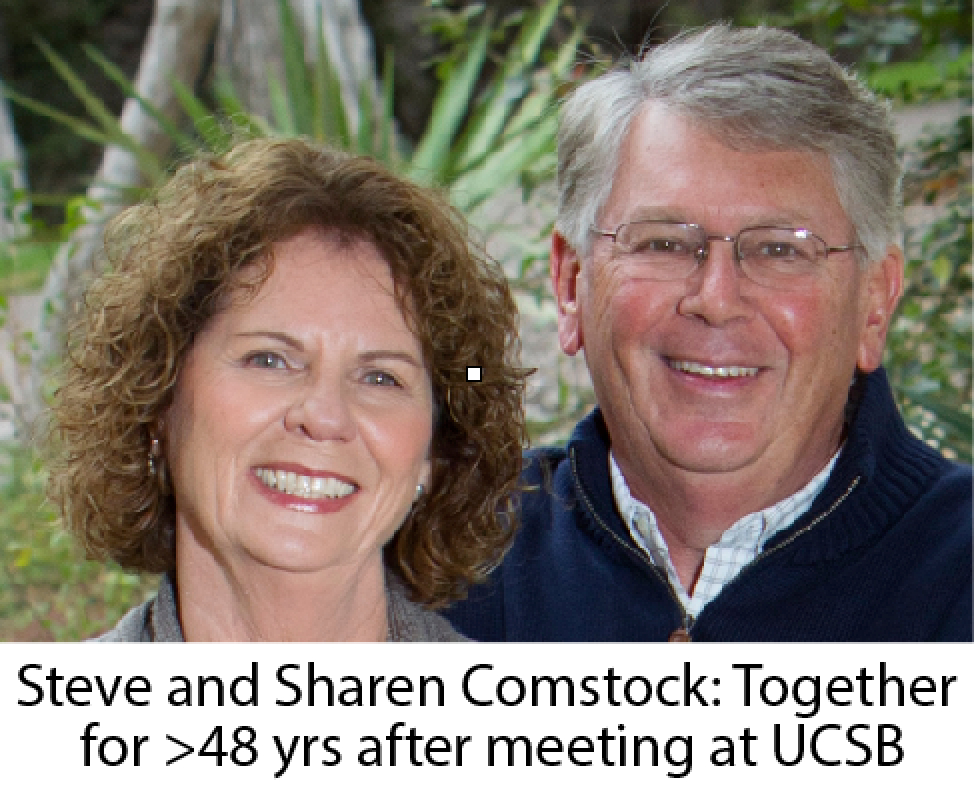
In 1989 Steve became President & Managing Director of Mobil Exploration Norway, where he managed exploration, acquisition and development of Statfjord, the world’s largest offshore oil field. In 1991, he returned to Dallas as Mobil’s International Exploration Manager. During this role, his team identified significant oil prospects in Equatorial Guinea and Russia… which have since become a major part of the corporation’s international production. From 1993-1997 Steve was Mobil’s Vice President of Upstream Planning and Technology before he became Vice President of Drilling, a unique position for a geologist, directing all drilling operations around the globe. Upon the Exxon - Mobil merger In 1999, Steve became Deputy GM of Mobil Upstream Research Lab in Dallas and subsequently became the VP of Upstream Technical Computing for XOM, integrating geological, geophysical and engineering computing data, applications and support with a worldwide cadre of specialists. In 2006, he became the CIO for XOM’s Global Upstream, incorporating productivity, business, commercial and technical computing. From 2000-2007 Steve served on various committees of the AAPG, SEG, SPE and on the board of POSC (Petrotechnical Open Systems Consortia).
Steve & Sharen retired in 2007 (“Believe me,” she says,” being a geologist’s wife for 48 years is hard work”). He is active in United Way and the Boy Scouts. They reside half the year in Austin, Texas on Lake Travis… because all 4 of their children and 9 grandchildren live in Texas… and the other half in Santa Barbara … with a view of the UCSB campus. Full circle.
Kaj Hoernle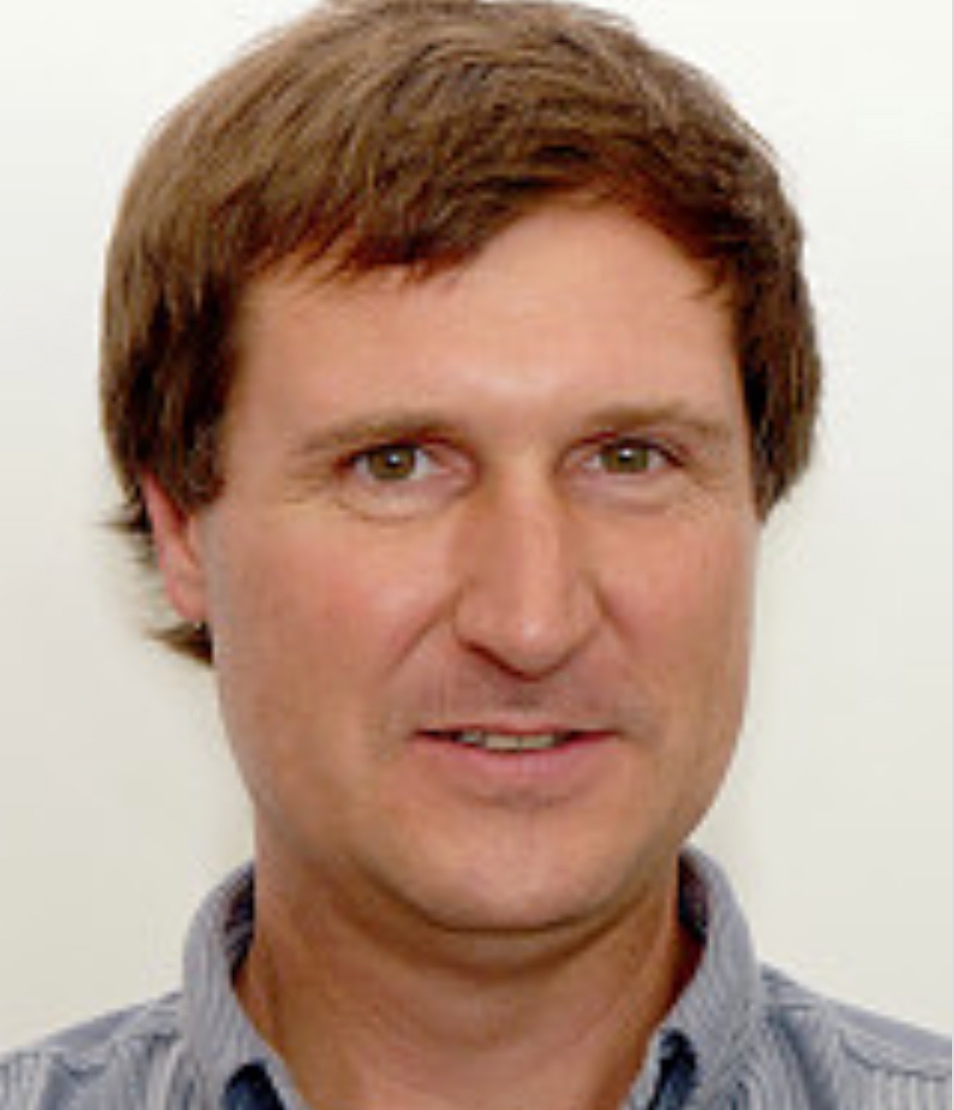
Kaj Hoernle completed his MS and PhD degrees, plus his postdoctoral study, at UCSB between 1982 and 1991. After a second postdoc at UCSC, he became a research scientist and lecturer. His research has focused on applying volcanology, igneous petrology, geochemistry, and geochronology as tools to solve geodynamic problems related to convergent and divergent margins and intraplate volcanic systems, including related hazards and climatic impact of volcanic emissions. About half of his research has been conducted on land, and the other half in the oceans. In 1994, Kaj received an Associate Professorship at the Christian-Albrechts Unversity of Kiel and the GEOMAR Research Center for Marine Geosciences affiliated with the university. In 2004, GEOMAR merged with the Institute of Oceanography (IFM) in Kiel to become the IFM-GEOMAR Leibniz Institute of Marine Sciences. As Deputy Director from 1999 through 2007, Kaj played a key role in the merger of the two research institutes. In 2012, this institute became the GEOMAR Helmholtz Center for Ocean Research.
At GEOMAR, Kaj set up and maintained the first radiogenic isotope group with facilities for analyzing Sr-Nd-Pb-Hf and U-series isotope ratios in magmatic, metamorphic, and sedimentary rocks, with an emphasis on volcanic rocks. Kaj served as a coordinator for >50 scientists in a collaborative research center focused on subduction zones and natural disasters. Kaj has held many leadership positions (Deputy Director, Head of Volcanology, Speaker) within GEOMAR where he coordinates diverse disciplines, including physical oceanography, maritime meteorology, marine biogeochemistry, marine ecology and biology, and the geology of the seafloor and margins of the ocean basins. Kaj been principal advisor to 14 MS students, 10 PhD students, and 13 postdocs. Clearly, Kaj is both blazing new trails and leaving a legacy for the next generation.
Kaj married Teresa Aydelotte who graduated from the UCSB Geology Department in 1988. After a year of mud-logging, she went to San Francisco State law school and is a member of the California bar. In Kiel, she runs a foreign exchange program, teaches Anglo-American law and translates everything from courses on “Cloud Physics” to books on “Natural Hazards”. They have three sons, ranging in age from 13 to 19.
James Mattinson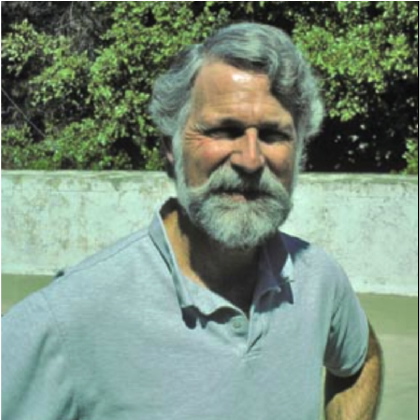
Professor Emeritus James Mattinson took his B.A. and Ph.D. (1970) in geology at UCSB where, among many other awards and honors, he was a Woodhouse Scholar. He joined the UCSB faculty as an assistant professor in 1977. His research focuses on two major areas of isotope geology: application of geochronology and radiogenic isotope tracer studies to problems in tectonics and igneous and metamorphic petrology; and advancement of understanding of the commonly complex behavior of the U-Pb system in zircon, one of the premier geochronology minerals. Mattinson has provided technological breakthroughs in zircon dating that are now being employed by the best labs around the world. Using clever combinations of annealing zircon grains and chemical dissolution, Mattinson discovered ways to reduce the sources of error in zircon ages. His techniques result in radiometric ages that have much, much smaller uncertainties than previously possible. Mattinson taught the gamut of courses over the years, including introductory geology, mineralogy, igneous petrology, geochemistry, summer field geology, and graduate courses in geochronology. He retired in 2009.
 Roy Patterson
Roy Patterson
Roy Patterson transferred to UCSB as a Junior and received the Woodhouse award when he graduated in Geology in 1975. He continued his education at UCSB, completing his MS thesis on the Tectonic Geomorphology and Neotectonics of the Santa Cruz Island Fault under guidance from Art Sylvester, Don Weaver, Bob Norris, and Ed Keller in 1977. Roy began working for the international consulting firm Dames & Moore only three days after submitting his thesis. His MS degree was awarded in 1979, after being told by his boss Art Darrow, former UCSB Geology acting assistant professor, that he needed to get his Master’s Degree before qualifying for a raise! (Hint to any procrastinators out there!!)
Roy has been fortunate to spend his 37-year career as a consulting geologist with one company, Dames & Moore where he became a Partner in 1990. Following the acquisition of Dames & Moore by URS Corporation in 1999, Roy continued his career with URS. The first nine years of his career focused on geologic and seismic hazards evaluation for critical structures. He was involved in hazards evaluation and development of seismic design criteria for liquefied natural gas facilities in California and Alaska, offshore oil development in Alaska, California, and Indonesia, pipeline and other lifeline facilities and power plants and cogeneration facilities in the western United States and Iran, and sensitive facilities in Australia, the Philippines, and California. Two of the defining projects in Roy’s career were the proposed LNG facility at Little Cojo Bay in western Santa Barbara County, that led to a publication on the ages and deformation of coastal marine terraces from Point Conception to Gaviota with fellow UCSB alumnus Jeff Nolan, and a proposed LNG facility in Valdez, Alaska that involved regional investigations and evaluation of the recurrence of pre-1964 great earthquakes along the Aleutian megathrust.
Roy’s career evolved to environmental assessment of soil and groundwater impacts and remediation of many large-scale former industrial and petroleum-related sites in the late 1980s, His practice continues in that area today. The Dames & Moore acquisition by URS allowed him to relinquish his operational and office management responsibilities and turn his attention to working with clients and mentoring staff. He focuses on helping his clients understand their environmental liabilities, assessing soil and groundwater impacts, and developing remediation strategies to address those impacts. Whereas most of his work is in the Southern California area, Roy has worked on very large redevelopment projects in Hong Kong and Shanghai for a major entertainment company. For the last eight years, he has been lead investigator for former petroleum refining-related facilities in the Los Angeles Basin for a major oil company.
Outside of work, Roy devotes his time to his family, is an avid saltwater fisherman, and is a home chef. Roy is happy to provide advice regarding careers in consulting geology. He can be reached at roy.patterson@urs.com.
Distinguished Alumni Awards for 2012-2013:
Karin Boyd, Tom Sisson
Karin Boyd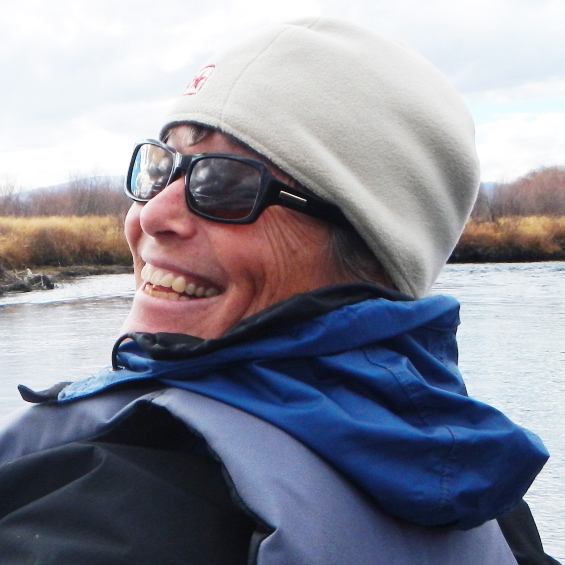
Karin came to UCSB in 1978 as a marine biology major. That lasted until spring of her sophomore year, when she went on a geology department field trip to the Panamint Valley, led by Drs. Webb and Norris. Hook, line, and sinker: she found her love of the earth sciences, completely immersing herself in the undergraduate curriculum provided by the UCSB geology department. Her time at UCSB was capped off by receiving the Outstanding Graduating Senior award in 1982, winning an indestructible field vest she proudly uses to this day. She then headed to graduate school at the University of Wyoming, where she studied the diagenetic evolution of the Santa Margarita sandstone in the southern San Joaquin Valley. Upon finishing her MS, Karin travelled overseas for a year with long-term beau and fellow UCSB geology/geophysics graduate Ritchie Boyd. She spent part of that time exploring for epithermal gold deposits in Queensland, Australia. In 1988 she took a job in Fort Collins, Colorado with a small water-resource consulting firm that was pioneering the field of applied geomorphology. She was mentored there for six years by Drs. Stan Schumm and Mike Harvey, while doing field work all over the country, and evaluating years by Drs. Stan Schumm and Mike Harvey, while doing field work all over the country, and evaluating destabilized river systems for the Corps of Engineers. In the process, she published several papers with Stan Schumm and ensconced herself in the field of applied fluvial geomorphology. In 1997, Karin took a job at Inter-Fluve, a stream restoration firm in Bozeman Montana that was one of the first firms in the country to approach river-system evaluation and rehabilitation as a collaborative integration of the sciences. From 1997 to 2002, Karin worked with a team of civil engineers, hydrologists, riparian ecologists, and fisheries biologists on stream restoration projects all over the country. In 2002, Karin went out on her own, incorporating as Applied Geomorphology Inc. She is currently the lead geomorphologist for several large engineering firms working on remediation/restoration of river systems listed as superfund sites in Montana, including Silver Bow Creek and the Clark Fork River below Butte, and at the Asarco Smelter site in East Helena. She recently returned from a 2-week trip to Mongolia, where she traveled with a plant ecologist and mine reclamation specialist from Montana State University, working with Buddhist Monks to develop ecological restoration demonstration projects at monasteries. When she’s not working, Karin can be found continuing to explore Montana by foot, bike, boat, or ski, spending time at her family ranch on the Rocky Mountain Front, or hanging out with the Canadian in-laws on an island off of the coast of British Columbia. Her oldest daughter Maggie is a Platinum Presidential Scholar at the University of Montana, and her younger daughter Cayley, a junior at Bozeman High School, is currently on exchange in northern Argentina. Ritchie remains an instructional technology gadfly at Montana State University, and they have been married for 25 years.
Tom Sisson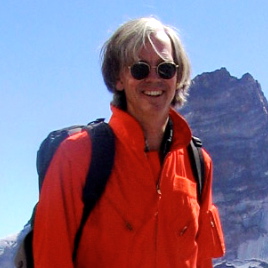
After graduating from Stanford in 1978, Tom Sisson came to UCSB in the fall of 1980 as one of several new graduate students who were working on the May 1980 eruption of Mount St Helens. Harry Glicken, later killed in the Unzen eruption, studied the St Helens landslide and debris avalanche, while Karen Gilkey worked on lahars, and Tom investigated the deposits and effects of the “directed blast.” They ended up at UCSB mainly because Cliff Hopson had determined the Holocene geology of St Helens, and because at that time R.V. Fisher was preeminent in the study of pyroclastic rocks. Together, Cliff and RV made UCSB the place to conduct field-related St Helens research.
In 1982, Tom finished his MSc at UCSB, returned to mapping quadrangles in the Sierra Nevada seasonally for the USGS, and spent winters rock-climbing and mountaineering while living out of a VW bus. He then returned to graduate school at MIT where he combined field studies on igneous rocks in the Sierra with experiments on basaltic magmas. During a subsequent post-doc at University of Texas, Dallas, Tom made the first quantitative measurements of dissolved H2O in arc basalt melt inclusions.
In 1993, the USGS invited Tom to lead a project studying the geology of Mount Rainier, Washington and to establish an experimental petrology/geochemistry lab. Through his work with the USGS since that time, Tom has become well known both for his astute field studies on igneous rocks in Hawaii, Japan, Alaska, the Cascades, the Sierra, and Saudi Arabia and for his innovative and incisive experimental studies on petrogenesis and volcanic processes. Currently, Tom is the Scientist-in-Charge for the Menlo Park office of the USGS Volcano Science Center.
Tom writes, “What I found at UCSB was an exceptional group of graduate students and inspiring faculty, with a strong emphasis on bridging between field observations and quantitative lab studies. Other notable graduate students then were Jim Mortensen, Dick Tosdal, Dave Kimbrough, Mary Lou Bevier, Sam Mukasa, Dave Sherrod, Bill Hirt, Dan May, Eric James, Barbara (Bobbie) John, John Shervais, and Scott Hornafius, among others. I routinely see Jim, Sam, Dave S., and Barbara at scientific meetings, and I see papers by Dave Kimbrough, John Shervais, and Scott Hornafius. This is a high professional success rate for any department. Most of us had worked in the earth sciences before arriving at UCSB, so we thought we knew a lot. The first thing the Department had us do, however, was take a field seminar that consisted of weekend van convoys across southern California to visit sites where UCSB faculty were conducting research, or where faculty thought important research problems might develop. John Crowell was the driver behind this field seminar, but many other faculty members pitched in. The Tertiary stratigraphy and structure of southern California were well known by then, thanks particularly to Tom Dibblee (who attended some of the weekend trips), but it was early days for thermobarometry of metamorphic rocks, widespread application of zircon geochronology, and quantitative neotectonics. We discovered how little we actually knew, but that there were important problems nearby to figure out, and that we could do it. Certain faculty manifested particular traits: Cliff was charismatic and could inspire anyone into the earth sciences, Art Sylvester emphasized the scientific and professional discipline necessary to succeed, and George Tilton showed that a scientific giant could be humble and patient with graduate students who knew comparatively nothing. What I got from UCSB was deep instruction across the earth sciences, with special emphasis on the value and interpretation of field observations. ”
It is gratifying to think that the instruction and experience that Tom gained here at UCSB has underpinned such a diverse, productive, and noteworthy career!
Department Fellows for 2012-2013:
Mark Grivetti, John Iwerks
Mark Grivetti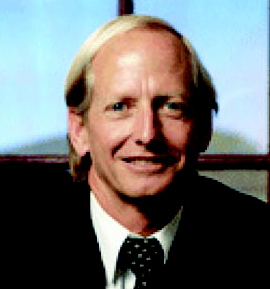
Mark Grivetti graduated from UCSB Department of Geology in 1982. Two years later, he earned a Masters Degree in 1984 under the direction of Professor Don Weaver. Mark’s MSc thesis described and analyzed deformation in the hydrocarbon-rich Monterey Formation. This thesis addressed some key unknowns: what caused the extensive deformation of the Monterey Formation, and what was the balance between structural deformation versus soft-sediment deformation due to loading or seismic shaking? Mark’s meticulous field observations and creative thinking made this thesis a classic that is still being sought by oil explorationists today (seriously). Since that time, Mark has developed a diverse background in development of water resources, geologic assessment, and seismicity studies, and he has worked in environmental remediation and risk assessment on many large-scale projects. Two of the more prominent companies for which he has worked are Dames and Moore and most recently GeoSyntec. Over the years, Mark has been especially helpful to our Department in terms of giving talks to classes on working in industry, as well as giving advice and helping students find jobs. Mark’s success and appeal seems attributable to his ability to think creatively, ask important question relevant to the problem being addressed, and being approachable. As was aptly demonstrated on the panel, Mark has an engaging personality. He is a credit to our Department.
John Iwerks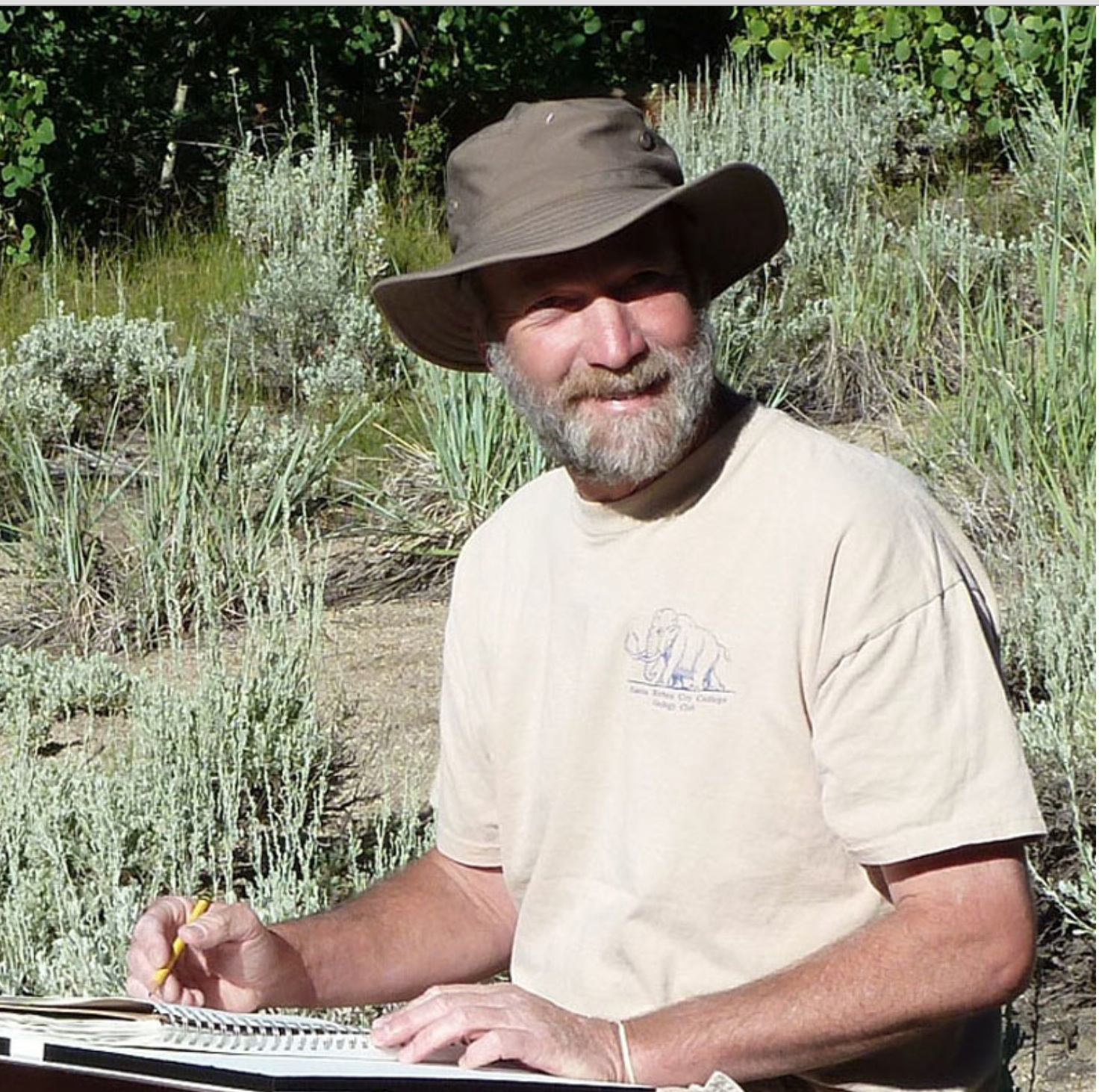
2013 Department Fellow John Iwerks has merged his skill as an artist with his love of geology to produce educational and entertaining animations and artwork that inspire our imaginations and convey the essence of key geologic ideas. John’s childhood was spent in the San Fernando Valley, where his father Don Iwerks, was Head of the Machine and Camera Shop at Walt Disney Studios. Don was instrumental in the development of Disneyland and the early camera systems of the True Life Adventures nature films in the 1950s. His grandfather, Ub Iwerks, was a close associate and friend of Walt Disney and was the sole animator and creator of the character Mickey Mouse, in the early films Plane Crazy, Gallopin’ Gaucho, and Steamboat Willie. John’s interest in geology sprang from a common interest in landscape painting that was nurtured by his mentor Ray Strong, in Santa Barbara. Ray emphasized an understanding of geology as integral with landscape painting, giving a sense of the underlying forces exposed on the surface of the landscape. A 5-day field trip to Death Valley with SBCC Geology cemented John’s love of the landscape. He was hooked and remained with the SBCC Geology department for many years as student, teaching assistant, field trip organizer/participant, and tutor. At SBCC, John also used his artistic talents to make graphics for T-shirts, create department logos, and design and paint two outside murals that provide cross-sectional views of the local geology and of the USA.
Along the way, John’s interest in animation and the Earth Science led him into some experimental films regarding geologic time and events. A mutual friend introduced John to Tanya Atwater, and they realized a common goal: merging of geology and animation for educational purposes. Soon they collaborated on several projects, including a video of the geologic history of Western North America; the re-do of the topographic relief map of California in the 1st floor of Webb Hall; artistic services on several projects with visiting geologic educators in Tanya’s Educational Multimedia Visualization Center (EMVC). These projects included work for Hawaii lava lake flows, rise and erosion of Sierra Nevada Granites, Pleistocene glaciation of the Northern Hemisphere, pygmy mammoths on the Channel Islands, sea-floor spreading of the Atlantic Ocean, and several more subjects (visit http://emvc.geol.ucsb.edu/index.htm to see these movies). John’s cross-section across SB Channel at SBCC was noticed by Andy Wyss and Tanya Atwater, who were intrigued by the possibility having a similar mural in Webb Hall. Working with UCSB geologists, John created the most accurate cross-section to date transecting the UCSB campus and spanning from the Channel Islands to the Santa Ynez Fault. This digital image is now on display on the 2nd floor of the Earth Sciences department.

Distinguished Alumni Awards for 2011-2012:
Scott Hornafius, Bruce Laws, Bradley Singer
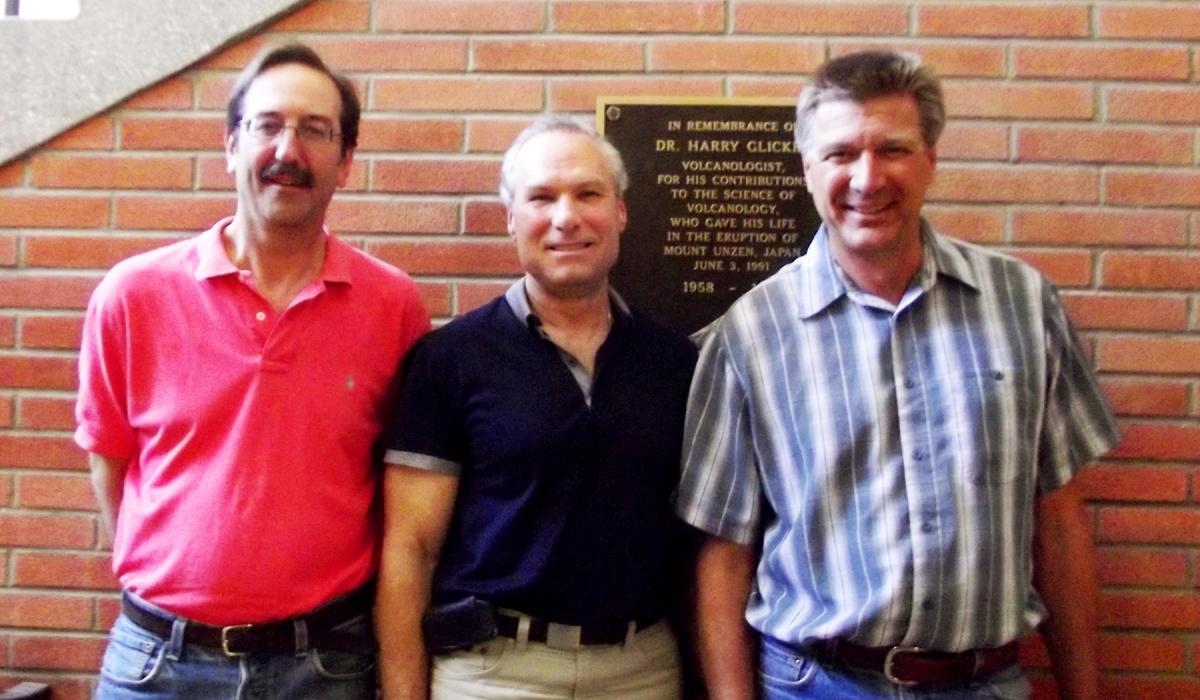
2012 Distinguished Alumni Award Recipients: (L-R) Bradley Singer, Bruce Laws & Scott Hornafius
Scott Hornafius
Scott Hornafius received our Distinguished Alumni award this year. Scott came to UCSB from Colgate University where he majored in geology and was introduced to the new theory of plate tectonics, which captured his imagination. At UCSB he originally intended to study ophiolites, including the Samail in Oman, with Cliff Hopson. But he became aware of the southern California tectonic rotations project then underway with Bruce Luyendyk and his students. At the same time, Don Weaver was leading a project to study the Monterey Formation for Mobil Oil. Scott thought that these two could be combined with a project aimed at paleomagnetism of the Monterey. His reasoning was that although the volcanic rocks being studied by Bruce’s students were the low-hanging fruit, stratigraphic information on the timing and rate of rotations was crucial. At first this approach wasn’t working out, with many Monterey samples showing remagnetization. Then he discovered that the dolomite beds in the formation had preserved the original depositional magnetization; the cementation process had in effect sealed it in. From that point, he completed an exhaustive study that defined the timing and rate of this Neogene event. After obtaining his Ph.D. in 1984 his first job was with Mobil Oil in locations that included Papua New Guinea and the U.K. One assignment was back in Santa Barbara, where he was part of the Clearview project that proposed to remove Platform Holly offshore from UCSB and drill from onshore near Ellwood using horizontal wells. During that period, he and Bruce reconnected to start the marine hydrocarbon seeps study that is still underway in our department. When Exxon bought out Mobil in 1999, Scott chose to start his own oil company. He convinced venture capitalists to join together to form MegaEnergy to explore for natural gas in undrilled anticlines in his home state of Pennsylvania. After years of up and down drilling success, MegaEnergy began focusing on the Marcellus Formation and was one of the first companies to test the shale gas potential using hydraulic fracturing. In 2010 Scott sold most of the assets of MegaEnergy and “retired”. He now has two major activities; one is as executive director of a new shale gas company in western Australia, and second as a visiting researcher at the Earth Research Institute at UCSB, where he is interested in studying the contribution of natural seeps to the global methane budget. Scott lives in the Denver area with his wife Lisa and daughter Hayley; his older daughter Kayla lives in Chicago. When not pursuing his professional interests, Scott can be found on the expert ski slopes around Breckenridge, Colorado.
Bruce Laws
After arriving at UCSB in 1974, Bruce Laws was lured him into geology by our field-based courses. Following graduation in 1978, Bruce stayed on to work under Professor Bruce Luyendyk’s guidance. Two years later, he completed a MSc in geophysics that was focused on magnetic properties of sheeted dike complexes in the Oman ophiolite. Remember that this was a time one discovery for plate tectonics, and the emplacement of ophiolites was still an intriguing mystery. Given his love of adventure and a desire to see the world, Bruce moved directly from UCSB to Chevron Overseas, where he worked for the next 19 years. Although nominally based in San Francisco and San Ramon, Bruce spent 3-to-5 years each in several extended overseas assignments. In his first several years, he worked his way up from geophysical data processing to become a developmental geologist, before becoming the supervisor of geological operations in the jungles and offshore areas of Papua New Guinea. By the time he went to Lagos, Nigeria, 5 years later, he was a division manager of geology from Chevron. Bruce then spent three years as the manager of exploration and development for Chevron’s operations in Angola, before moving to Luanda, Angola for his final four years with Chevron. In 2001, Bruce left Chevron for Houston-based Murphy Oil, where he was a vice president for new ventures and later the regional vice president for Europe, Latin America, and Africa. Seven years later, Bruce jumped to his current role as the president of Maersk Oil in Houston. You may have heard of Maersk: it’s mostly known as a large shipping company, but it has a good size oil and gas operation. Rather unusually, Maersk is one of a very few large, yet family-run multinational firms. Given Bruce’s appealing combination of competence, experience, and modesty, it seems somehow appropriate that he is working for a family-run company! Under his guidance, Maersk Oil in Houston grew in the past four years from ~25 employees to over 200! Simultaneously Bruce has guided development of a selective and integrated three-year training program that blends extensive overseas assignments with focused training in exploration, production, and management. Bruce and his wife Cynthia have 6 children – a blended family like the Brady Bunch. Bruce has a passion for skiing, getting his car on the track, and continuing to see the world.
Bradley Singer
After graduating from Santa Paula High School in Ventura, County in 1978, Brad Singer began at UCSB as a Nuclear
Engineering major. He took a geomorphology course taught by Richard Norris and was swayed toward a professional career in Geology by field trips to the Mojave Desert, Point Sal Ophiolite, and San Gabriel Anorthosite – the latter trips led by Cliff Hopson. Volcanology won over as a life-long passion as a result of Cliff’s memorable lecture on the 1980 Mt. St. Helens eruption in his petrology class and after seeing the crater and lava dome first-hand with Harry Glicken in 1982 following the Poleta Folds field camp taught by Rick Sibson. After earning a BA from UCSB in 1983, Brad pursued an MS degree at the University of New Mexico on the origin of Rio Grande rift andesites, and in 1990 completed a PhD in Geology at the University of Wyoming, where he focused on the origin of Aleutian Island Arc magmas (a subject he first learned about in Tanya Atwater’s tectonics course!). Brad learned K-Ar dating by measuring several of his Aleutian PhD samples at the USGS Menlo Park laboratory under the guidance of Marvin Lanphere. While at the University of Wyoming, Brad met Teri Boundy, a UCSB Earth Science alumna (BA 1986) who was pursuing an MS degree in Geology. Brad and Teri have been married since 1993, and their daughter Zoe will attend the University of Chicago beginning in the Fall of 2012.
Brad’s academic career began in 1990 with a visiting professorship at the University of Michigan and was followed by a post-doc with Mike Dungan at Southern Methodist University, where he initiated field-based research on arc volcanism in Chile that has continued for 20 years. During the course of this initial project, he and Laurie Brown discovered – near the bottom of the glacially-exposed lava flow sequence – a remarkable recording of the last reversal of earth’s geomagnetic field. This serendipitous finding occurred when research on the geodynamo was undergoing a renaissance and there was a voracious appetite for new, detailed volcanic and sedimentary records of polarity reversals and excursions. Thus, Brad developed an 40Ar/39Ar geochronology research program, first at the University of Geneva, Switzerland (1993-1999), and since 1999 at the University of Wisconsin-Madison. Singer’s research is diverse and includes: (1) the volcanic and magmatic evolution of subduction zones (the Aleutian arc, the Andean Southern and Central volcanic zones, Central American Volcanic Arc), (2) the Quaternary history of earth’s geomagnetic field (data from volcanic field sites in Chile, Argentina, France, Italy, Iceland, New Zealand, Australia, Hawaii, Canary Islands, Tahiti, Cape Verde, Ethiopia, and China), (3) the Pleistocene-recent history of glaciation in the Patagonian Andes, and (4) the chronostratigraphy and evolution of Eocene and Cretaceous basins of the Rocky Mountains. Brad has supervised 6 PhD and 15 MS students since 1998. The UCSB undergraduate curriculum of the day emphasized breadth across earth science subdisciplines as well as the importance of careful field craft. Brad claims that he traces his success to the excellent preparation while at UCSB, both in the classrooms and in the outdoors. Singer is currently a full professor and Chair of the Department of Geoscience at the University of Wisconsin-Madison.
